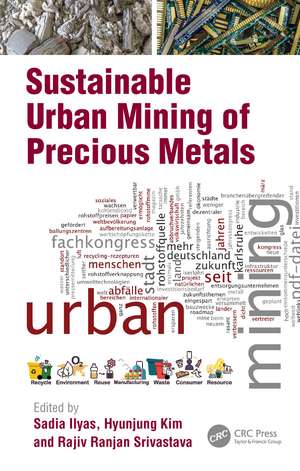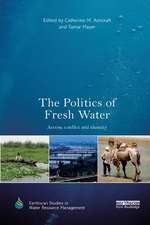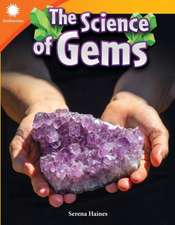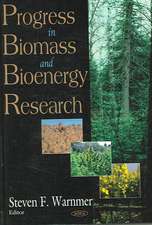Sustainable Urban Mining of Precious Metals
Editat de Sadia Ilyas, Hyunjung Kim, Rajiv Ranjan Srivastavaen Limba Engleză Hardback – 9 mar 2021
- Offers a comprehensive review of different techniques used in recycling technology for urban mining of precious metals
- Describes the concept of urban mining and its correlation with circular economy
- Discusses feasibility of precious metal extraction and urban mines scope and their potential
- Explains the subject in-context of sustainability while describing chemistry fundamentals and industrial practices
- Provides technical flow sheets for urban mining of precious metals with diversity of lixiviant
| Toate formatele și edițiile | Preț | Express |
|---|---|---|
| Paperback (1) | 359.30 lei 43-57 zile | |
| CRC Press – 4 oct 2024 | 359.30 lei 43-57 zile | |
| Hardback (1) | 936.02 lei 22-36 zile | +24.58 lei 5-11 zile |
| CRC Press – 9 mar 2021 | 936.02 lei 22-36 zile | +24.58 lei 5-11 zile |
Preț: 936.02 lei
Preț vechi: 1028.60 lei
-9% Nou
Puncte Express: 1404
Preț estimativ în valută:
179.10€ • 187.50$ • 148.20£
179.10€ • 187.50$ • 148.20£
Carte disponibilă
Livrare economică 17-31 martie
Livrare express 28 februarie-06 martie pentru 34.57 lei
Preluare comenzi: 021 569.72.76
Specificații
ISBN-13: 9780367517502
ISBN-10: 0367517507
Pagini: 262
Ilustrații: 27 Tables, black and white; 80 Illustrations, black and white
Dimensiuni: 156 x 234 x 25 mm
Greutate: 0.57 kg
Ediția:1
Editura: CRC Press
Colecția CRC Press
Locul publicării:Boca Raton, United States
ISBN-10: 0367517507
Pagini: 262
Ilustrații: 27 Tables, black and white; 80 Illustrations, black and white
Dimensiuni: 156 x 234 x 25 mm
Greutate: 0.57 kg
Ediția:1
Editura: CRC Press
Colecția CRC Press
Locul publicării:Boca Raton, United States
Public țintă
AcademicCuprins
1. Sustainable Urban Mining of Precious Metals: An Introduction. 2. Pre-treatment, Concentration, and Enrichment of Precious Metals from Urban Mine Resources. 3. Urban Mining of Precious Metals with Halide as Lixiviant. 4. Urban Mining of Precious Metals with Cyanide as a Lixiviant. 5. Urban Mining of Precious Metals with Thiosulphate as a Lixiviant. 6. Recovery of Precious Metals by Precipitation, Adsorption, Electrowinning, Supercritical Fluids, and Bio-mediated Approaches. 7. Recovery of Precious Metals by Solvent Extraction. 8. Recovery of Precious Metals using Ion-exchange Chromatographic Approaches. 9. Integrated Recovery Processes for Precious Metals from Urban Mine Sources and Case Studies.
Notă biografică
Sadia Ilyas is currently working as Brainpool Scientist (NRF)/Research professor at the Department of Mineral Resources and Energy Engineering at Jeonbuk National University in Jeonju, Republic of Korea. After receiving her M.Phil. and Ph.D. in Inorganic Chemistry from Bahauddin Zakariya University, Multan and University of Agriculture, Faisalabad, Pakistan, respectively; she served in China as Senior Researcher at the School of Chemical Engineering and Pharmacy (Wuhan) and in Korea as Postdoctoral fellow at Korea Institute of Geoscience and Mineral Resources, and in Pakistan as Assistant Professor at GC University, Faisalabad. Besides the academic lecture in Inorganic Chemistry her research deals with hydrometallurgical exploitation of energy-critical elements and urban mining of value added metals. She has published more than 50 research articles in peer-reviewed international journals and also author in 25books/contributed book chapters/text books/ laboratory manuals.
Hyunjung “Nick” Kim is the Professor at the Department of Mineral Resources and Energy Engineering at Jeonbuk National University in Jeonju, Korea. Dr. Kim received his B.S. and M.S. degrees from Hanyang University in Seoul, Korea and Ph.D. from the University of California, Riverside in Chemical and Environmental Engineering. He specializes in colloidal chemistry, froth flotation, bio-hydrometallurgy and microplastics with over ten years of academic research experience. Prof. Kim is currently serving as the Editorial Member/Associate Editor in several reputed journals. Prof. Kim has authored more than 100 refereed journal publications, several book chapters. He has been awarded the Young Scientist award from the Industrial Minerals & Aggregates Division of the Society for Mining, Metallurgy, and Exploration (SME) in 2016. Prof. Kim also served as lead director of BK-3, one of the prestigious project of Korea. Prof. Kim also served as lead director of Brain Korea 21+, one of the prestigious projects of Korea.
Dr. Rajiv Ranjan Srivastava is a Sr. Lecturer at the Faculty of Natural Sciences and Sr. Researcher at the Institute of Research and Development, Duy Tan University (DTU), Da Nang Vietnam. Dr. Srivastava holds Ph.D. degree from the Korea University of Science and Technology (UST) in the major of Resources Recycling (under the discipline of Engineering). Before joining to DTU, he has worked at TAE-HYUNG Recycling (R&D centre, Korea), Rubamin Limited (Rubamin Technology Centre, India), CSIR-National Metallurgical Laboratory (India) in various positions. His inter-disciplinary research interests include waste management, urban mining, sustainable management of environmental resources, and hydrometallurgical exploitation of energy-critical elements for clean and alternative energy production. He is a member of several scientific societies and has published several papers in top-ranking SCI journals as well as a number of book chapters and edited several books.
Hyunjung “Nick” Kim is the Professor at the Department of Mineral Resources and Energy Engineering at Jeonbuk National University in Jeonju, Korea. Dr. Kim received his B.S. and M.S. degrees from Hanyang University in Seoul, Korea and Ph.D. from the University of California, Riverside in Chemical and Environmental Engineering. He specializes in colloidal chemistry, froth flotation, bio-hydrometallurgy and microplastics with over ten years of academic research experience. Prof. Kim is currently serving as the Editorial Member/Associate Editor in several reputed journals. Prof. Kim has authored more than 100 refereed journal publications, several book chapters. He has been awarded the Young Scientist award from the Industrial Minerals & Aggregates Division of the Society for Mining, Metallurgy, and Exploration (SME) in 2016. Prof. Kim also served as lead director of BK-3, one of the prestigious project of Korea. Prof. Kim also served as lead director of Brain Korea 21+, one of the prestigious projects of Korea.
Dr. Rajiv Ranjan Srivastava is a Sr. Lecturer at the Faculty of Natural Sciences and Sr. Researcher at the Institute of Research and Development, Duy Tan University (DTU), Da Nang Vietnam. Dr. Srivastava holds Ph.D. degree from the Korea University of Science and Technology (UST) in the major of Resources Recycling (under the discipline of Engineering). Before joining to DTU, he has worked at TAE-HYUNG Recycling (R&D centre, Korea), Rubamin Limited (Rubamin Technology Centre, India), CSIR-National Metallurgical Laboratory (India) in various positions. His inter-disciplinary research interests include waste management, urban mining, sustainable management of environmental resources, and hydrometallurgical exploitation of energy-critical elements for clean and alternative energy production. He is a member of several scientific societies and has published several papers in top-ranking SCI journals as well as a number of book chapters and edited several books.
Recenzii
Overall, it is well presented and detailed with process flowcharts and useful data. However, the importance of this book – aside from addressing the environmental and sustainability imperative – lies in presenting the opportunities that urban mining offers, which it suggests some countries are already exploiting, and how it can be deployed with readily available and established technology, as well as the need for related industries to operate within legal frameworks. MATERIALS WORLD MAGAZINE, July/August 2022
Descriere
This book provides a detailed review of extraction techniques for urban mining of precious metals like gold, silver and platinum groups. Periodical growth levels of spent sources, management necessities and correlation with circular economy, merits and demerits of methods, and environmental impact of every process is described.




















